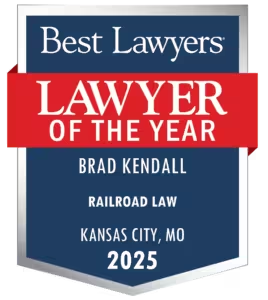
Kansas is Cracking Down on Speeding: Here’s What You Need to Know
Excessive speed continues to be a pressing issue in Kansas City. Despite ongoing efforts to educate drivers about the dangers of speeding, many continue to ignore posted speed limits, putting themselves and others at risk. The consequences of speeding are not just legal but also potentially life-altering.
At Kendall Law Group LLC, we are dedicated to ensuring the safety and well-being of our community. As a firm specializing in personal injury law, we have seen firsthand the devastating impact that reckless driving behaviors like speeding can have on individuals and families. Our commitment goes beyond providing legal representation; we strive to promote safe driving practices and contribute to making our roads safer for everyone.
Alarming Statistics
The statistics surrounding speeding-related accidents are sobering. According to the National Highway Traffic Safety Administration (NHTSA), the chance of death or serious injury doubles for every 10 mph over 50 mph a vehicle travels. Speeding contributes to nearly one-third of all traffic fatalities nationwide. In Kansas alone, 79 people lost their lives in speed-related crashes in 2023. While this marks a reduction from the previous year, the number of serious injuries increased to 2,085, highlighting the persistent danger of speeding on our roads.
Kansas’ Efforts to Combat Speeding
Recognizing the dangers of speeding, the Kansas Department of Transportation (KDOT) has partnered with the Drive To Zero Coalition and law enforcement agencies to launch the “Speeding Wrecks Lives” campaign. Running from July 22 to August 11, this initiative combines increased safety messaging with enhanced enforcement to urge drivers to obey posted speed limits. The campaign aims to educate drivers about the risks of speeding and encourage safer driving behaviors.
Gary Herman, KDOT’s Behavioral Safety Manager, emphasizes that these efforts are about saving lives. By following posted speed limits, drivers can significantly reduce their risk of accidents and protect themselves, their passengers, and other road users. The campaign also highlights the financial implications of speeding, including increased fuel consumption and vehicle maintenance costs, providing a comprehensive approach to deterrence.
The Science Behind Speeding
Speeding not only increases the likelihood of accidents but also exacerbates their severity. The physics of speeding is straightforward yet unforgiving. At 50 mph, it takes approximately 221 feet to stop a vehicle. This distance more than doubles to 460 feet at 80 mph. The increased stopping distance reduces reaction time, making it harder to avoid collisions. Furthermore, speeding reduces the effectiveness of safety measures like seat belts and child safety seats, leading to more severe injuries in the event of a crash.
Common Excuses for Speeding and Their Flaws
Drivers often justify speeding with various excuses, none of which hold up under scrutiny. Some claim they are in a hurry, while others believe they can handle their vehicle at higher speeds. However, these justifications ignore the unpredictable nature of driving conditions and the actions of other drivers. Speeding reduces the time available to react to sudden changes, increasing the risk of accidents. It’s essential to recognize that no appointment, meeting, or event is worth the potential cost of a life.
Common Injuries Caused by Negligent Speeders
High-speed collisions can have devastating consequences. Here are some of the most common injuries caused by negligent speeders:
- Traumatic Brain Injuries (TBI): Severe impacts can cause significant brain trauma, leading to long-term cognitive, physical, and emotional impairments.
- Spinal Cord Injuries: Damage to the spinal cord can result in partial or complete paralysis, profoundly affecting mobility and bodily functions.
- Internal Organ Damage: High-speed collisions can cause serious damage to internal organs such as the liver, spleen, kidneys, and lungs, leading to internal bleeding and potential organ failure.
- Compound Fractures: These severe bone fractures occur when the bone pierces the skin, often requiring surgical intervention and prolonged recovery.
- Chest Injuries: Severe trauma to the chest can cause rib fractures, lung damage (such as pneumothorax or hemothorax), and heart injuries, including cardiac contusions.
- Pelvic Fractures: High-impact collisions can fracture the pelvic bone, leading to severe pain, internal bleeding, and potential damage to the bladder or reproductive organs.
- Severe Burns: In the event of a fire following a collision, victims can sustain serious burns, leading to extensive skin damage, infection, and long-term rehabilitation.
- Amputations: The force of a high-speed crash can result in the traumatic loss of limbs, requiring surgical amputation and significant rehabilitation.
- Crush Injuries: These occur when part of the body is subjected to extreme pressure, often leading to muscle damage, nerve damage, and potential loss of function in the affected area.
- Complex Facial Injuries: High-speed impacts can cause severe fractures to the facial bones, leading to disfigurement and requiring extensive reconstructive surgery.
Such significant injuries often result in hundreds of thousands of dollars in medical bills, when the state-required minimum insurance coverage is $25,000.00. A skilled Kansas City auto accident injury attorney can help guide you to maximum compensation and reduction of your medical bills.
Practical Tips for Kansas City Drivers
For Kansas City drivers, adhering to speed limits is a crucial step toward ensuring road safety. Here are some practical tips to help you stay within the legal speed limit and drive safely:
- Plan Ahead: Allocate extra time for your trips to avoid the temptation to speed. Being rushed increases the likelihood of speeding and reduces your overall driving quality.
- Use Cruise Control: On highways, use cruise control to maintain a constant speed. This can help prevent unintentional speeding and reduce fatigue on long drives.
- Stay Alert: Pay attention to speed limit signs and adjust your speed accordingly. Speed limits can change based on road conditions, so staying alert is essential.
- Mind the Weather: Adjust your speed according to weather conditions. Rain, snow, and fog reduce visibility and road traction, requiring lower speeds to maintain control.
- Educate Young Drivers: If you have young or inexperienced drivers in your household, emphasize the importance of adhering to speed limits and model good driving behavior.
The Role of Technology in Promoting Safe Driving
Technology can play a significant role in promoting safe driving behaviors. Many modern vehicles come equipped with features that can help drivers stay within speed limits and avoid accidents. Here are a few examples:
- Speed Limiters: Some vehicles have speed limiters that prevent the car from exceeding a preset speed. This feature can be particularly useful for young or inexperienced drivers.
- Adaptive Cruise Control: This advanced form of cruise control adjusts the vehicle’s speed based on the traffic ahead, helping maintain a safe following distance and preventing speeding.
- Telematics: Telematics systems monitor driving behaviors, including speed, and provide feedback to drivers. These systems can be used by parents to monitor their teen drivers or by fleet managers to ensure safe driving practices among employees.
- Speed Cameras: Speed cameras placed at strategic locations can deter speeding by enforcing speed limits and issuing fines to violators. While controversial, they have been proven effective in reducing speeding-related accidents in many areas.
Kansas City Auto Accident Injury Lawyers
At Kendall Law Group LLC, our mission is to provide dedicated legal support to those affected by personal injury. We understand the profound impact that accidents, especially those caused by speeding, can have on victims and their families. Our team of experienced attorneys is committed to advocating for safer roads and holding negligent drivers accountable. If you or your loved one has been seriously injured in a car wreck caused by a negligent driver, we are here to help you put your life back together. Call us for a free consultation at (816) 531-3100 or contact us HERE.
FAQs
1. How dangerous is speeding on Kansas City roads? Speeding on Kansas City roads significantly increases the risk of accidents and the severity of injuries, contributing to a large percentage of traffic fatalities.
2. What are some effective ways to avoid speeding? Effective ways to avoid speeding include planning ahead, using cruise control, staying alert, adjusting speed for weather conditions, and educating young drivers.
3. How does speeding affect stopping distances? Speeding greatly increases stopping distances, making it harder to avoid collisions. For example, at 80 mph, a vehicle’s stopping distance is more than double that at 50 mph.
4. What technologies can help prevent speeding? Technologies like speed limiters, adaptive cruise control, telematics, and speed cameras can help prevent speeding by monitoring and controlling vehicle speed.
5. What role can communities play in promoting road safety? Communities can promote road safety by hosting educational campaigns, encouraging safe driving pledges, supporting local enforcement, and establishing neighborhood speed watch programs.
6. What is the “Speeding Wrecks Lives” campaign? The “Speeding Wrecks Lives” campaign is an initiative by KDOT and the Drive To Zero Coalition to educate drivers about the risks of speeding and encourage safer driving behaviors through increased safety messaging and enhanced enforcement.
By planning, using technology, staying alert, and getting involved in community efforts, Kansas City drivers can contribute to a safer driving environment. Remember, no appointment, meeting, or event is worth the potential cost of a life. Drive safely, obey speed limits, and help us achieve the goal of zero fatalities on our roads. Together, we can make a difference and save lives.
For more information on the risks of speeding and tips for safe driving, visit the National Highway Traffic Safety Administration’s website or contact your local law enforcement agency. Let’s work together to keep our roads safe and prevent speeding-related tragedies.
Additional Resources
Enhancing Road Safety in Kansas City: Top 10 Dangerous Roads
Kansas City Drivers: The Second ‘Speediest’ In The Country – A Growing Concern
The Deadly Consequences of Speeding: Stay Safe and Slow Down!
Navigating Medical Payment Coverage (MedPay) in Kansas and Missouri






